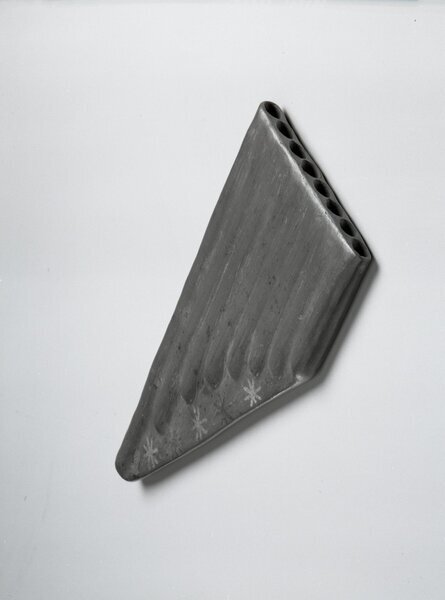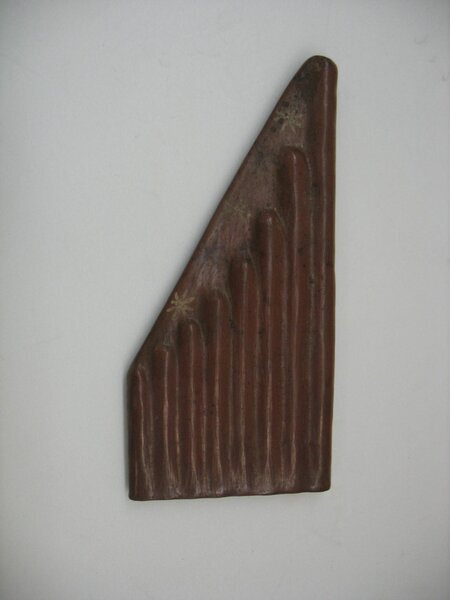Panpipe Item Number: 41.433 from the Brooklyn Museum


Credit Line
Henry L. Batterman Fund
Label
Hundreds of panpipes similar to this one have been found in Nasca burial sites along pilgrimage routes, suggesting that the instruments served an important ceremonial function in ancient times. Scholars believe that panpipes were played by pilgrims during processions to the giant geoglyphs (designs scratched on the ground) in the Nasca desert and at ritual feasts that took place at the nearby site of Cahuachi. These ceremonies were held to ensure water for the agricultural season.
Cientos de zampoñas parecidas a ésta han sido encontradas en enterratorios Nasca a lo largo de rutas de peregrinaje, sugiriendo que este instrumento servía una función ceremonial importante en tiempos antiguos. Académicos creen que las zampoñas eran tocadas por peregrinos durante procesiones a los geoglifos gigantes (diseños marcados en la tierra) en el desierto de Nasca y en festines rituales que se realizaban en el sitio cercano de Cahuachi. Estas ceremonias se realizaban para asegurar el agua para la estación agrícola.
What
Who
- Culture
- Nasca
Where
- Holding Institution
- Brooklyn Museum
Other
- Location
- Arts of the Americas Galleries, 5th Floor
- Classification
- Musical Instrument